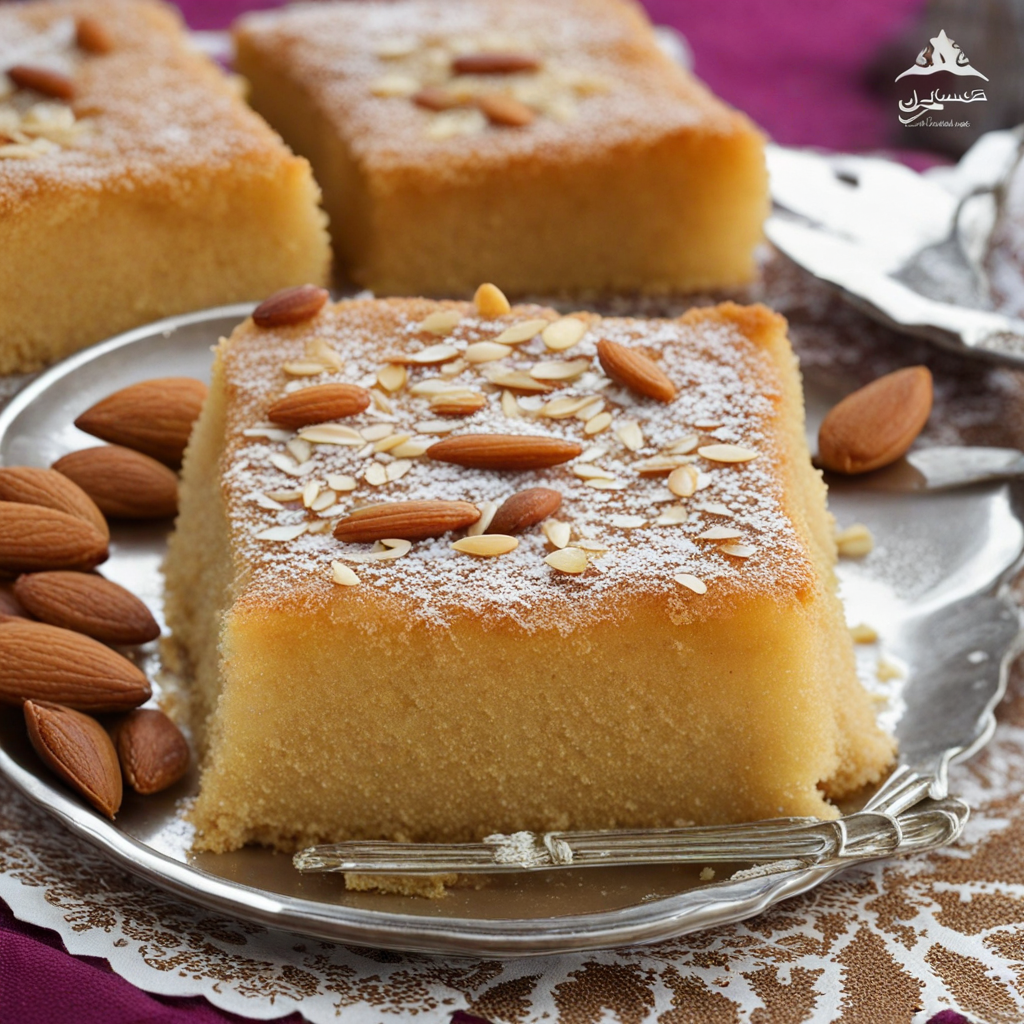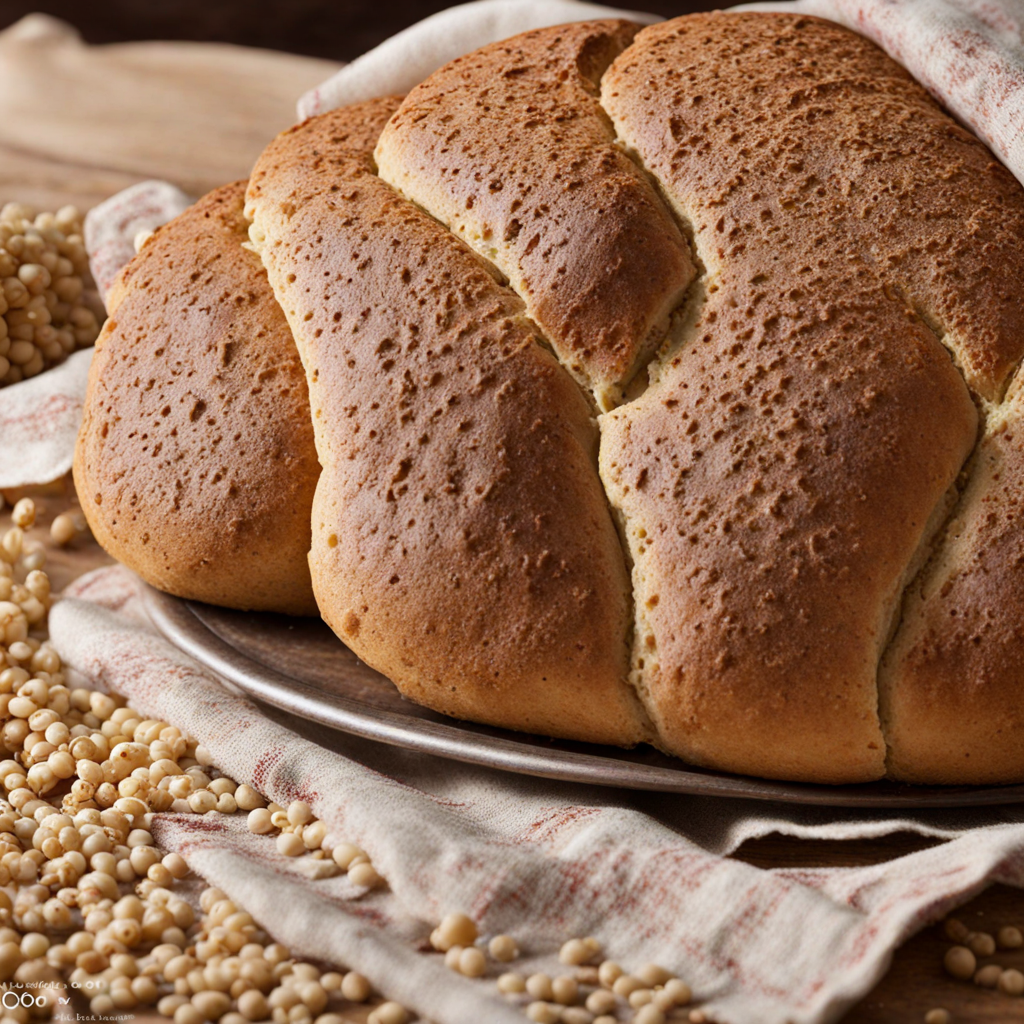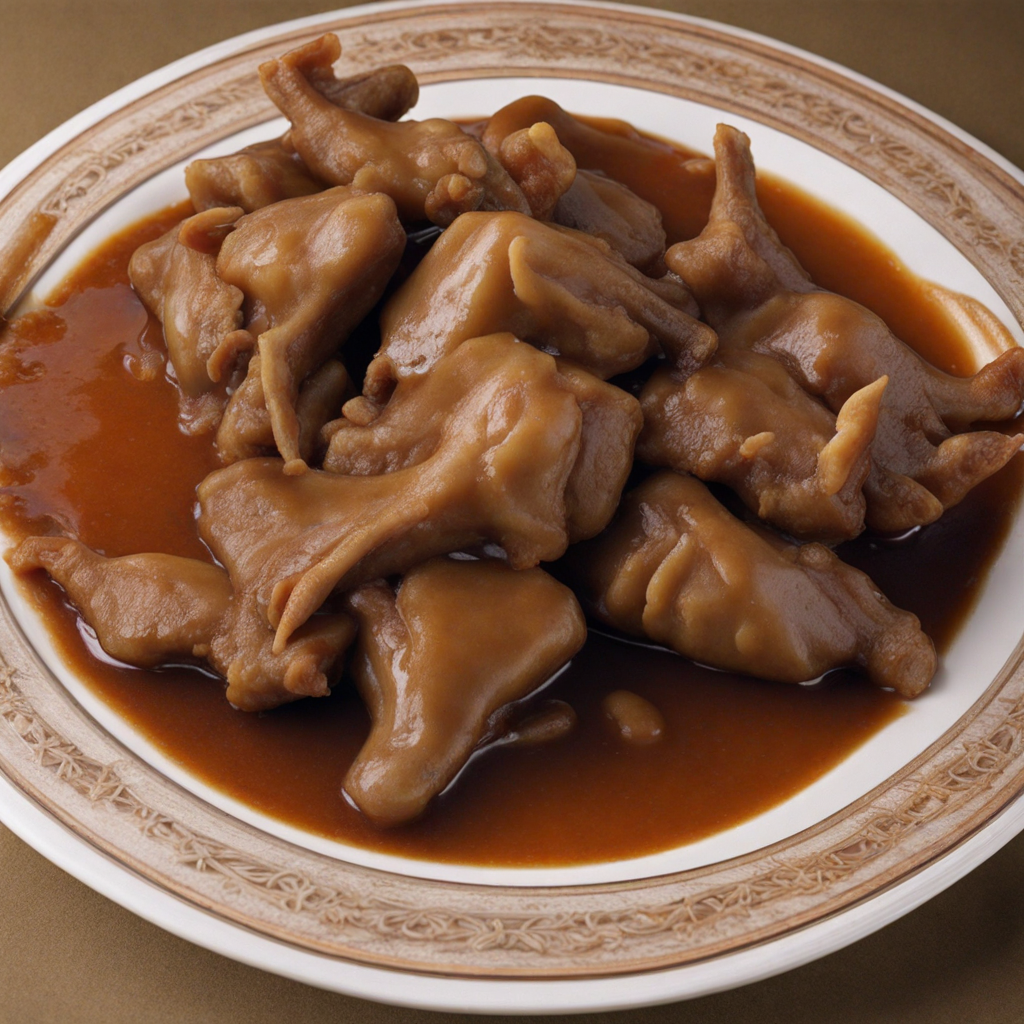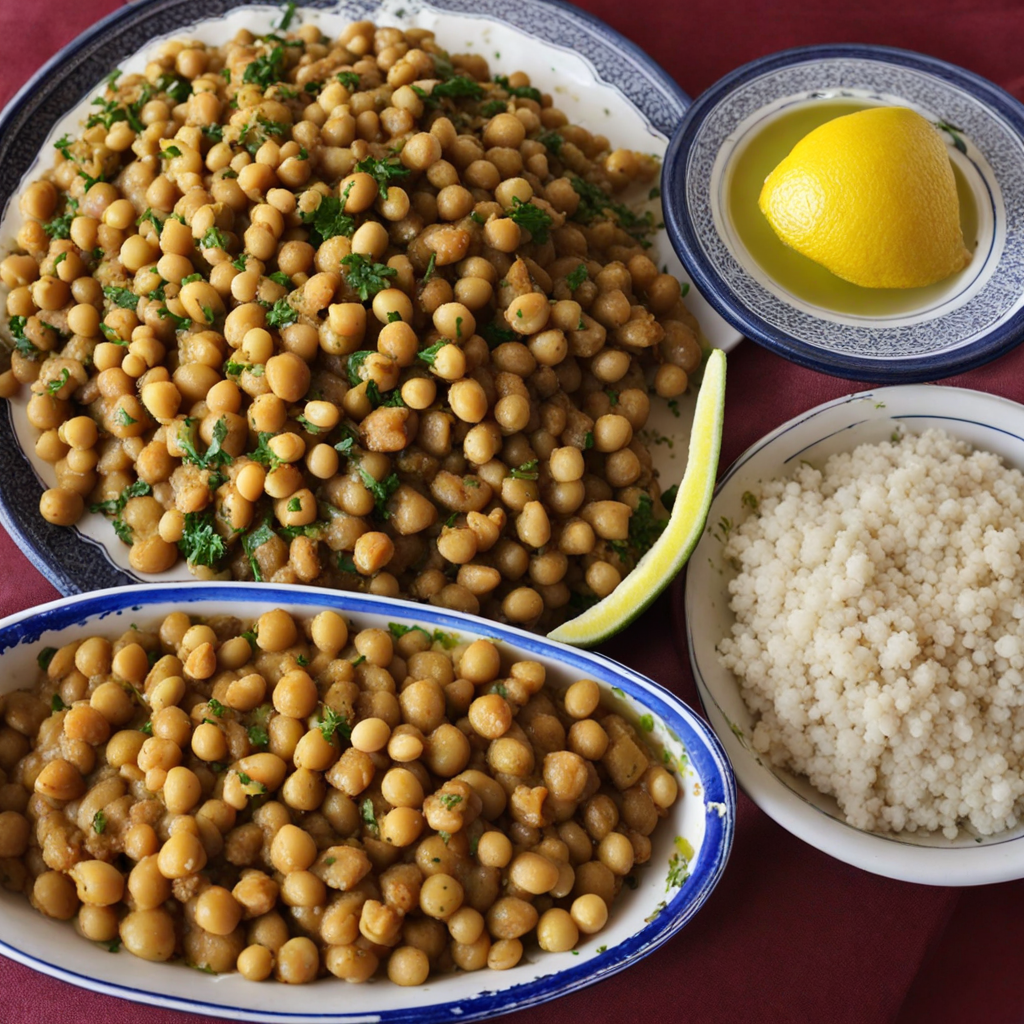Basbousa
Basbousa is a delightful, traditional dessert hailing from Sudan, known for its unique texture and rich flavor profile. This semolina-based cake boasts a moist and slightly dense consistency, which sets it apart from other sweet treats. The primary ingredient, semolina, is combined with sugar, yogurt, and a hint of baking powder to create a batter that rises beautifully during baking. Once cooked to a golden perfection, the cake is often cut into diamond or square shapes, making it not only delicious but visually appealing as well. What truly elevates Basbousa is the generous soaking of the cake in a fragrant syrup made from sugar, water, and a splash of lemon juice or rosewater. This syrup seeps into the porous cake, infusing it with a luscious sweetness that balances the subtle nuttiness of the semolina. The addition of coconut flakes or almonds on top adds a delightful crunch and a touch of tropical flavor, enhancing the overall experience of this beloved dessert. Basbousa is not only a treat for the taste buds but also a cultural symbol in Sudanese society, often served during festive occasions and gatherings. Its comforting sweetness and satisfying texture make it a perfect accompaniment to a cup of coffee or tea. Each bite transports you to the heart of Sudan, allowing you to savor a piece of its culinary heritage while you explore this enchanting dessert that is sure to become a favorite in your own kitchen.
How It Became This Dish
The History and Cultural Significance of بسبوسة in Sudan Introduction Bسبوسة, a delightful semolina cake soaked in syrup, holds a special place in the hearts and palates of Sudanese people. Known for its moist texture and rich flavor, this dessert has transcended its humble origins to become a symbol of celebration and community. The journey of بسبوسة from its ancient roots to modern Sudan showcases the intricate tapestry of Sudanese culture, culinary evolution, and the influence of trade and migration. Origins of بسبوسة The origins of بسبوسة trace back to the broader region of the Middle East and North Africa, where semolina-based desserts have been cherished for centuries. Semolina, derived from durum wheat, has been a staple in various cultures for its versatility and nutritional value. In many Arabic-speaking countries, similar desserts, like the Egyptian "basbousa" or the Levantine "hareeseh," have also gained popularity. The exact origins of بسبوسة are difficult to pinpoint due to the fluidity of culinary traditions across borders. However, it is believed that the dessert was introduced to Sudan through trade routes and migration during the Islamic Golden Age, which facilitated the exchange of spices, ingredients, and cooking techniques. As a result, بسبوسة evolved to embody local flavors and customs, incorporating unique ingredients such as coconut, almonds, and various flavorings. Cultural Significance In Sudan, بسبوسة is more than just a dessert; it is a vital part of cultural celebrations, family gatherings, and religious festivities. It often graces the tables during weddings, Eid celebrations, and other significant events. The preparation and sharing of بسبوسة foster a sense of community and togetherness, as families come together to make this beloved treat. The act of making بسبوسة is often a communal endeavor. Traditionally, women gather to prepare the cake, sharing stories, laughter, and recipes passed down through generations. This practice not only preserves the culinary heritage but also strengthens social bonds within the community. As the cake is baked and later soaked in syrup, the aroma fills the air, inviting everyone to partake in the celebration. Development Over Time As Sudan has undergone various social, political, and economic changes, so too has بسبوسة. The dessert has adapted to reflect the influences of different cultures and historical events. During the colonial era, the introduction of new ingredients and cooking methods expanded the repertoire of Sudanese cuisine. بسبوسة began to incorporate elements from both local and foreign culinary practices, leading to the development of distinct regional variations. In urban areas, the dessert has evolved further, embracing modernity while retaining its traditional essence. Bakeries and cafes now offer بسبوسة in a variety of styles, from classic versions topped with shredded coconut to innovative renditions infused with chocolate or fruit. The rise of social media has also played a role in popularizing بسبوسة, as food enthusiasts share their own takes on the dish, often incorporating contemporary aesthetics and presentation. Despite these changes, the core of بسبوسة remains unchanged—a symbol of hospitality, generosity, and cultural pride. It serves as a reminder of Sudan's rich culinary heritage while allowing for creativity and adaptation in an ever-changing world. Regional Variations and Ingredients While the fundamental ingredients of بسبوسة remain consistent—semolina, sugar, yogurt, and ghee—regional variations reflect the diverse landscapes and cultures of Sudan. In northern Sudan, for instance, بسبوسة might be prepared with dates or honey, drawing on the region's agricultural abundance. Meanwhile, in the south, the dessert may incorporate local fruits or spices, showcasing the fusion of flavors and traditions. Almonds and coconut are commonly used as toppings, adding texture and flavor. The use of rosewater or orange blossom water in the syrup infuses the cake with fragrant notes, elevating its sensory experience. Each family may have its own secret ingredient or method of preparation, resulting in an array of interpretations that reflect personal and regional identities. Bسبوسة in Contemporary Sudanese Society In contemporary Sudan, بسبوسة continues to be a beloved dessert, cherished by both young and old. It is often served alongside traditional drinks like hibiscus tea or coffee, creating a harmonious balance of flavors. During Ramadan, the dessert takes on heightened significance, as families gather to break their fast with a sweet treat. The ritual of sharing بسبوسة during this holy month reinforces the values of generosity and togetherness. The globalization of food culture has also impacted the perception and consumption of بسبوسة. As Sudanese diaspora communities spread across the globe, they bring their culinary traditions with them, ensuring that بسبوسة remains a beloved dish even far from home. In this way, بسبوسة serves as a culinary ambassador, connecting Sudanese expatriates to their roots and fostering a sense of belonging. Conclusion The history of بسبوسة in Sudan is a testament to the resilience and adaptability of culinary traditions. From its ancient origins to its present-day iterations, this beloved dessert encapsulates the essence of Sudanese culture—community, celebration, and a deep appreciation for food. As it continues to evolve, بسبوسة will undoubtedly remain a cherished symbol of Sudanese hospitality and a delicious reminder of the rich tapestry of flavors that define Sudan's culinary heritage. Whether enjoyed at a festive gathering or a quiet family meal, بسبوسة is more than just a dessert; it is a celebration of life, love, and tradition in every bite.
You may like
Discover local flavors from Sudan







